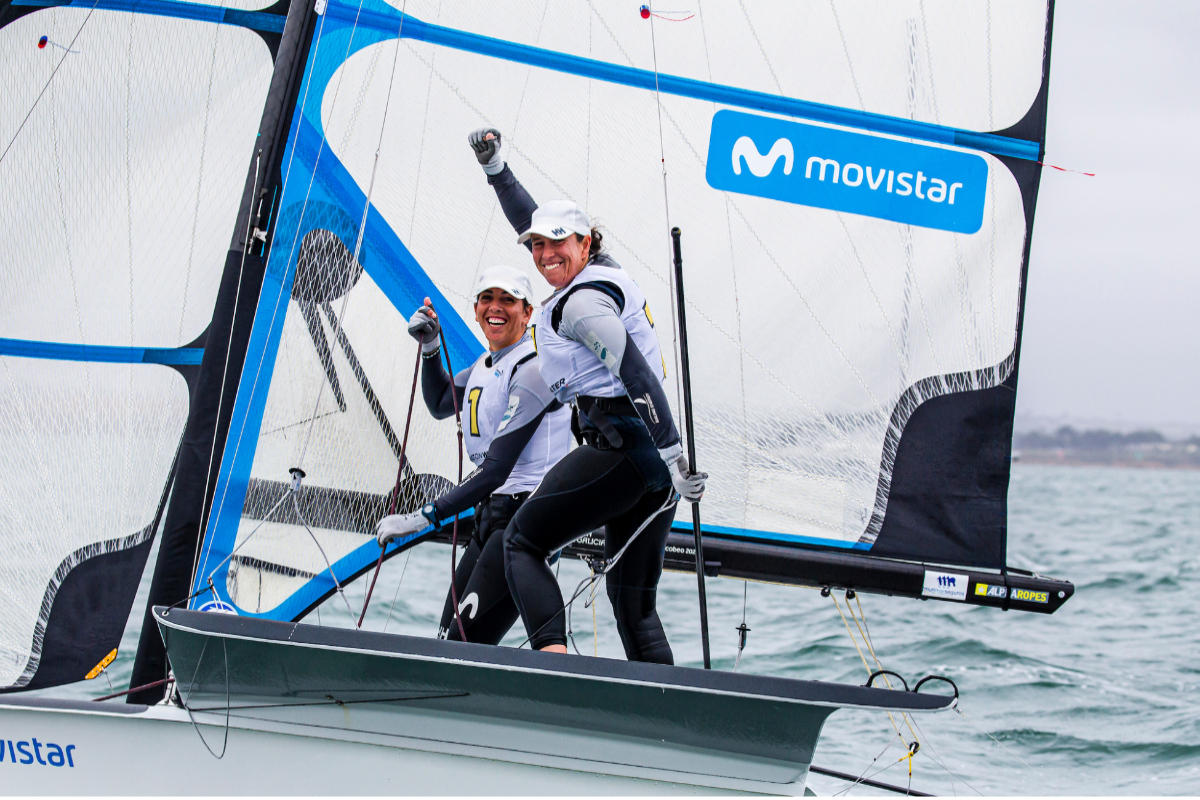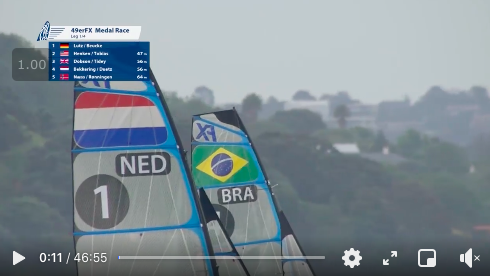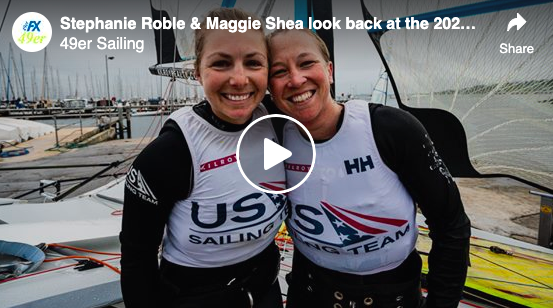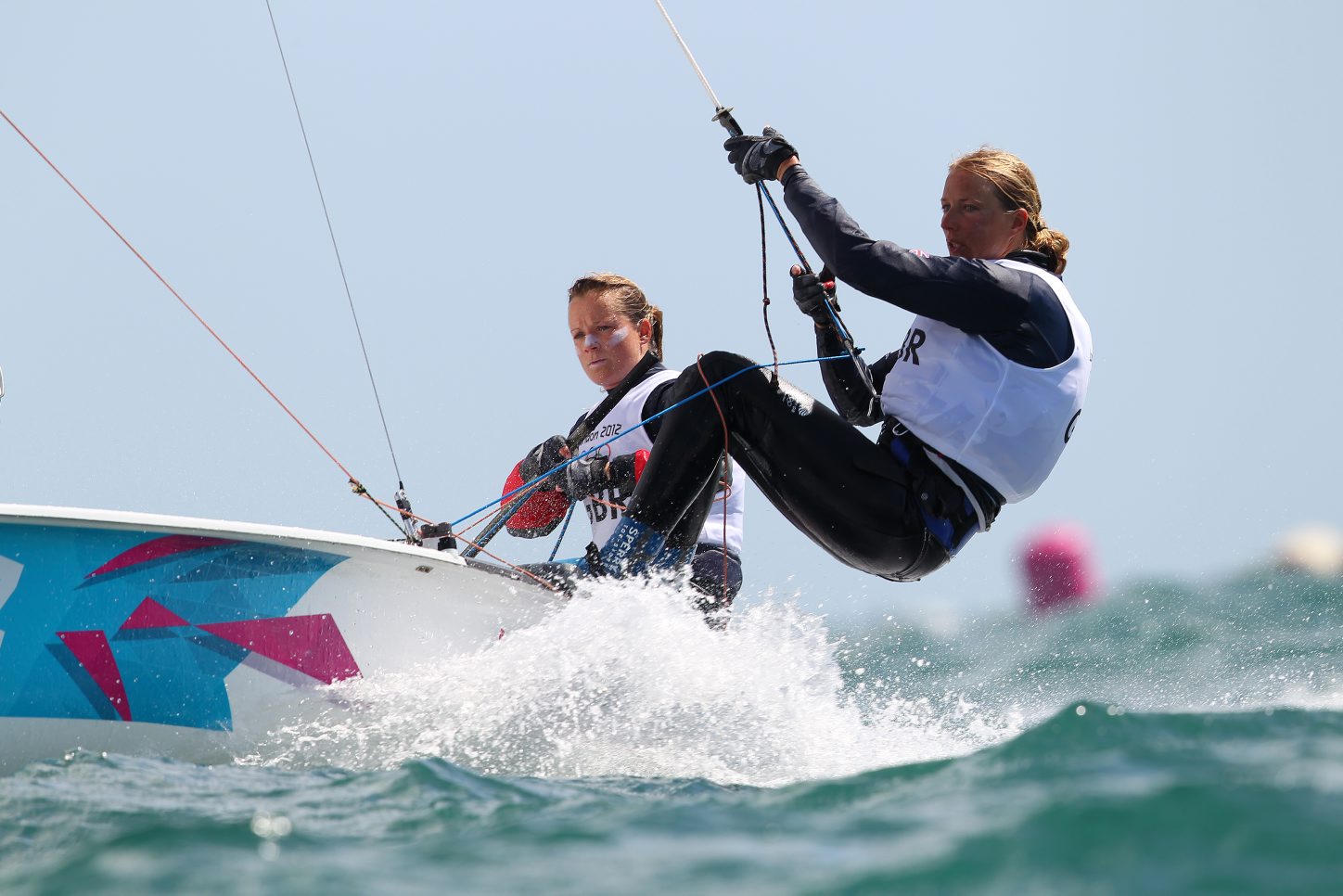It’s tough to find a less forgiving doublehanded dinghy than a 49er or a 49erFX, two high-performance skiffs so tender they can’t sit on their lines when fully rigged unless they have an agile and athletic crew aboard. Given this inherent instability, driving one of these skiffs requires precise coordination, communication and driving abilities, skills that Paris Henken, 20, and Helena Scutt, 24 — US Sailing Team Sperry’s 49erFX representatives for the Rio 2016 Olympics — have been refining for nearly four years.
While Henken and Scutt have been sailing together for less than a quadrennial, they’ve bonded in ways that few other teams experience. In September 2013, while competing at the 49erFX Worlds in Marseilles, France, the teammates were on port tack, at full-hike extension, when an unavoidable collision with a starboard-tack boat sent Scutt to the hospital with a broken spine, two broken ribs and a lacerated left kidney. While a weaker team might have crumbled under such circumstances, Henken and Scutt grew tighter and more committed to their shared Olympic dream.
Henken and Scutt are both excellent athletes. Henken grew up in San Clemente, California, where she competed on the Mammoth Mountain ski team. Scutt, a native-born Brit who moved to Kirkland, Washington, when she was 2, took up sailing in high school. Scutt sailed for Stanford University while earning an undergraduate degree in biomechanical engineering, and has hit pause on her master’s degree to pursue Olympic sailing. Likewise, Henken mothballed her undergraduate studies at the College of Charleston to sail with Scutt and master the driving duties of the 49erFX.
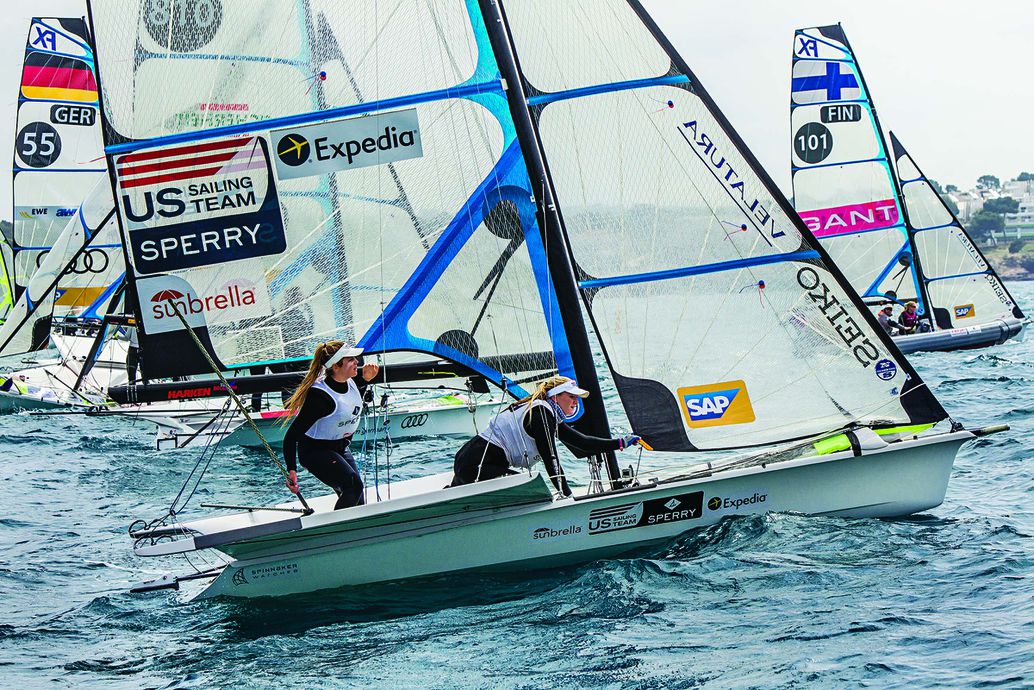
The two captured bronze at the 2015 Pan American Games and then secured their berth at the 2016 49erFX Worlds in Clearwater, Florida. While the 2016 Olympics will be their first Olympiad, the two are committed to developing the mind-meld communication skills needed to tackle lumpy windward legs, big-air bear-aways and tactically complex leeward gate roundings. Yet when asked, Henken and Scutt each point to the starting sequence as the most difficult part of a 49erFX experience.
“The five-minute starting period is the most important part of the race,” says Henken. “With about three minutes left, people start to pick their spot, and they’ll have to hold that position, so that’s what I focus on — and, of course, not being over-early.” Scutt agrees, adding that while light-wind conditions (below 10 knots) are straightforward (except for the final acceleration) and heavy air encourages survival starts, 12- to 15-knot winds are challenging because people are sailing aggressively and the boats are on the edge of control. Irrespective of wind conditions, Scutt makes sure she knows the team’s compass headings on both tacks, which she processes and makes available to Henken.
“At five minutes, we’ve already discussed where we want to start, but if it’s shifty, we may be pressed to decide later,” says Scutt. By four minutes, the team has already decided whether to target one end or the middle of the line. “Making sure that Paris feels confident is really important,” says Scutt. “I’m making sure there aren’t any red lights going off in my head, and if there are, we get out of there as soon as possible. If I think everything is fine and we’re in a good spot, I tell her so that she can focus on executing what we are doing well.”
The 49erFX carries 9 feet of beam (including its wings) and two 8-foot tiller extensions, so there’s plenty of hardware projecting athwartships of each skiff’s centerline. Lining up next to a team that’s struggling to stay in control of its boat can lead to contact and ruin a start. Henken and Scutt try to position next to teams that can control their boat but which they can also try to control tactically. “It’s an intimidation game,” says Scutt. “How in control are they? How in control are we? The game becomes about how close you can get.”
The physical and psychological games don’t stop there. “Once we’ve found our spot, we fight to keep it and to also make a hole to leeward,” says Henken, who explains that it takes nuanced maneuvering to hold their place on the starting line, with the bow essentially just shy of irons. Come five to eight seconds before the start, however, each boat is bearing away and gathering speed, thus placing a tactical premium on space to leeward. “There’s a fine balance between having enough speed, not being over-early, and having enough room to put the bow down,” says Henken, adding that the U flag is commonly used in 49erFX racing.
Treading this fine line requires tightly choreographed moves as well as a crystal-clear understanding of individual responsibilities. “My job is to make sure the boat is either flat or slightly heeled and that the jib is ready,” says Scutt. She moves constantly from wing to wing, sometimes grabbing the trapeze handle in certain conditions, while Henken remains in the middle of the boat. “If I’m not focused, we can’t hold our spot,” she says. Moreover, the sailors have to beware of marauding boats seeking to steal their leeward hole and windward boats that create too big a hole to weather, which attract opportunity seekers.
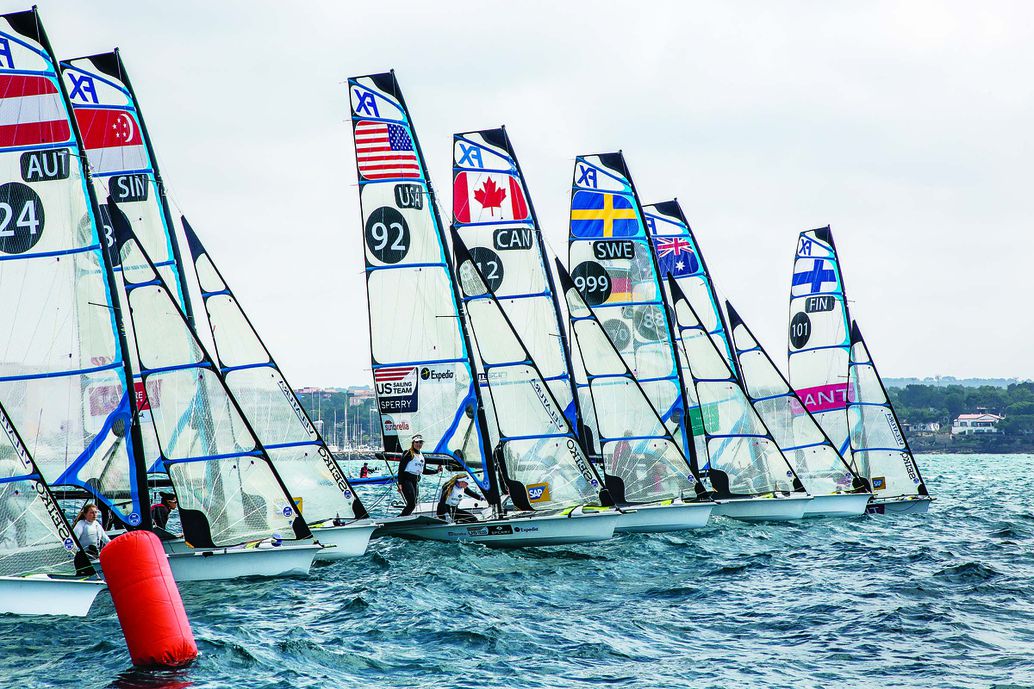
Much like dominating a master-level chess game, successfully holding a spot on an Olympic starting line in a 49erFX involves many incremental moves. “It’s important to attack the windward boat, but when the leeward boat gets too close, we defend by bearing away,” says Henken. While she and Scutt try to attack the weather boat, she explains, they’re simultaneously defending their leeward hole. “To get our hole requires lots of communication, and we talk regularly regarding heel. If there’s a leeward attacker, I bear away — while trying not to build any speed, which is especially hard in a skiff — and attack them. Then I head back up into a slide.”
This latter move is accomplished by Henken grabbing the boom and back-winding the main, inverting the battens, and pulling the tiller to starboard while Scutt pulls the jib to port, thus sliding the boat to weather. “The mainsail is a powerful tool,” Henken says. She back-winds the sail if her bow is too far into the wind, and pops the battens to drive her bow back up as needed.
Henken and Scutt invest the final moments of the starting sequence in managing their line position while also trying to ensure the windward boat doesn’t create any tactically dangerous scenarios. “Sometimes we have to do a double tack to eat up a big hole to windward,” says Henken. While Scutt controls the boat’s heel, Henken keeps an eye on the windward boat. “If they double-tack, we double-tack immediately as well,” says Scutt, “only tacking back to starboard at the last moment, because that allows us to get really close to the windward boat.”
Once the starting gun sounds, however, Henken and Scutt aim to cross the starting line with gathering pace. Scutt typically cleats off the jibsheet, grabs the mainsheet from Henken, and then hands the jibsheet back to her skipper, who is likely already at a full trapeze hike. Other boathandling complexities remain, including keeping the bow clear of the brine on the uphill legs, the much-discussed bear-away moves at the top of the course, close-proximity maneuvering, and the leeward gate rounding. But for Henken, Scutt and untold other 49erFX teams, while passing the starting-line test requires intense concentration and nuanced acumen, it rewards handsomely as upwind lanes are determined.


